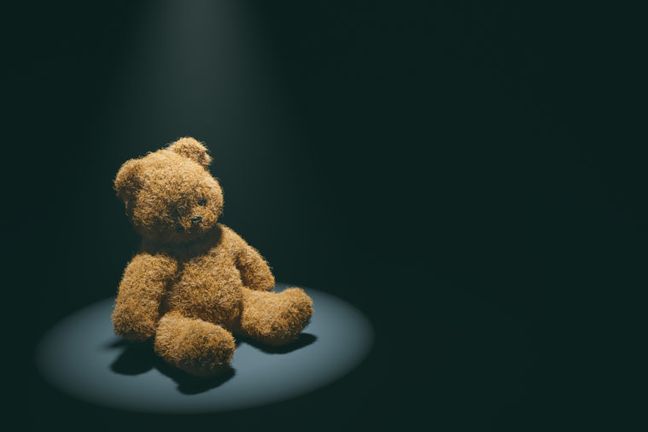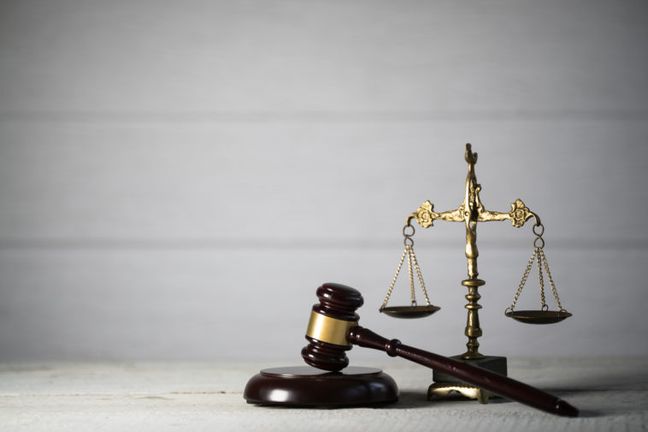In New York, 2019 has brought sweeping changes to the time limits applicable to matters arising from childhood sexual abuse. Through what is commonly known as the Child Victims Act (“CVA”), legal action for childhood sexual abuse will be available for longer periods of time and many civil cases previously barred by the passage of time may now be pursued by individuals alleging abuse suffered as children. New York is no longer one of the most restrictive states in terms of the time to pursue these claims, but is now among the trendsetters in facilitating an individual’s ability to seek legal redress for childhood sexual abuse for a longer period of time.
The Pertinent Changes to the Law
New York Governor Andrew Cuomo signed the CVA into law on February 14, 2019 and it became effective immediately. Changes include increased time for prosecutors to pursue criminal charges and increased time for individuals to pursue civil claims against those who may be deemed responsible for childhood sexual abuse. On the civil side of things, there is also a one-year window for the pursuit of claims that were time-barred or dismissed as untimely under prior New York law.
Criminal Prosecution
Even before the enactment of the CVA, there was no statute of limitations for the most serious sexual crimes against children. However, mid- and low-level felonies could only be charged until the victim turned 23 years of age. Under the new law, the state may charge alleged perpetrators for these crimes until the victim turns 28.
Civil Claims
Perhaps the more significant change to the legal landscape is found by those seeking to pursue civil claims against individuals and entities that may bear responsibility for acts of childhood sexual abuse. In addition to providing additional time for the commencement of new cases, there is now a window to pursue claims for those who missed their opportunity to do so under the old law.
The Revival Statute
Civil Practice Law and Rules (“CPLR”) § 214-g, referred to as the Revival Statute, provides that any person who was a victim of childhood sexual abuse and whose civil claim could not be pursued because it was time-barred will have a one-year window to commence an action against an individual or entity for physical, psychological or other injury suffered as a result of the abuse.
Although the CVA was effective February 14, 2019, the Revival Statute incorporated a six-month waiting period designed to allow for the preparation of cases by attorneys and for the courts to get ready for the anticipated influx of litigation. Consequently, August 14th was the first day of the revival period. At least in part because of the anticipated challenges these cases may present due to aging participants and events, they are entitled to a preference and rules have been established to facilitate their timely adjudication. See CPLR § 3403(a)(7); CPLR § 214-g; 22NYCRR § 202.72.
Noteworthy is that the dismissal of a prior case based on a statutes of limitations defense will not provide a defense to the refiling of that case during the revival period. Along those same lines, a plaintiff’s previous failure to file a notice of claim or notice of intention file a claim against a governmental body will not serve as a defense to an action filed during the revival period.
The Toll for Infancy
Another significant change found in the CVA is the statute of limitations as it applies to child sexual abuse cases going forward under CPLR § 208 (b). Effective February 15, 2019, a civil claim for childhood sexual abuse against a perpetrator or institution may be made on or before the plaintiff reaches the age of 55. This is a dramatic change from the previous law under which victims only had until they reached the age of 23 to sue a perpetrator and the age of 21 to sue an allegedly responsible institution. Last and as it relates to governmental entities, a notice of claim or notice of intention to file a claim is no longer a prerequisite in these matters.
Overall Impact
Even in its first days and month, the CVA dramatically increased the number of childhood sexual abuse cases in New York. Many individuals have filed under the revival statute when the door opened for doing so on August 14th – hundreds of cases were filed on the first day alone and law firms are openly touting the many hundreds of cases they plan to file. For months, courts, attorneys, victim advocacy groups, and organizations/institutions that may be heavily exposed to these claims have prepared for the anticipated tidal wave of litigation that will be commenced between August 14, 2019 and August 14, 2020.
Advertising also began in earnest months ago when the New York state Senate was retaken by the democratic party paving the way for the passage of the CVA. Zealous attorneys have taken to social media, the airwaves and print media to secure potential clients. Victim advocacy groups have also implemented their own media campaigns. One national victim assistance organization and advocacy group enlisted the assistance of New York law makers and launched an ad featuring state legislators who were sexually abused as children themselves and who encourage fellow victims to come forward during the one-year revival period.
The impact of a state such as New York enacting these reforms goes well beyond its borders, as other states have passed or look to pass substantial reforms as well. This has not gone without notice of regularly targeted institutions and their insurers, who have raised significant concerns about the likelihood of false claims and bankrupt organizations.
With a nationwide dialogue regarding what were once issues often kept hidden or simply not discussed on the rise, the enactment of the Empire State’s CVA and similar reforms in other states should come as no surprise. As a result, there will be more litigation; there will be more plaintiffs; and both those institutions that have historically been the subject of child sexual abuse claims and those that have not must prepare for the ongoing and new challenges they will face.

 Author: Harry Harrison
Author: Harry Harrison
 Cannabis Workers Allege Quota to Trim 4 Pounds a Day Violates the California Labor Code
Cannabis Workers Allege Quota to Trim 4 Pounds a Day Violates the California Labor Code
 The Ninth Circuit Reminds Us: Every Word Matters
The Ninth Circuit Reminds Us: Every Word Matters
 NO WAY, PRO SE! The Consequences of Abusing the Judicial System as a Pro Se Litigant in Colorado
NO WAY, PRO SE! The Consequences of Abusing the Judicial System as a Pro Se Litigant in Colorado
 Victim of Financial Mismanagement or Unlawful Retaliation? New Jersey City University Program Founder Claims School Retaliated After Reporting Alleged Sexual Harassment
Victim of Financial Mismanagement or Unlawful Retaliation? New Jersey City University Program Founder Claims School Retaliated After Reporting Alleged Sexual Harassment
 “Real Housewives” Gets a Reality Check
“Real Housewives” Gets a Reality Check
 Missing a Chapter: Insufficiency of Expert Deposition Testimony in Medical Malpractice Litigation
Missing a Chapter: Insufficiency of Expert Deposition Testimony in Medical Malpractice Litigation
 Crash Course: Why Summary Judgment Misses the Mark in Illinois Multi-Cause Limousine Crash Collision
Crash Course: Why Summary Judgment Misses the Mark in Illinois Multi-Cause Limousine Crash Collision
 Bitter Truths: Lead, Cadmium, and Defective Pleadings in California Chocolate Class Action
Bitter Truths: Lead, Cadmium, and Defective Pleadings in California Chocolate Class Action
 The Law of Unintended Consequences: Including Insurance Brokers in Litigation Strategy Communication May Waive the Attorney-Client Privilege
The Law of Unintended Consequences: Including Insurance Brokers in Litigation Strategy Communication May Waive the Attorney-Client Privilege
 The End of Vaccination Requirements by The Federal Government and Beyond: What Does It Mean for Employers?
The End of Vaccination Requirements by The Federal Government and Beyond: What Does It Mean for Employers?
 The Tragic and Curious Case of A Train vs. Pedestrian Collision Gone Nuclear
The Tragic and Curious Case of A Train vs. Pedestrian Collision Gone Nuclear
 California Deemed It Was Time: Bereavement Leave for Employees
California Deemed It Was Time: Bereavement Leave for Employees
 How Broad is Too Broad When Interpreting Insurance Policy Provisions? NJ Supreme Court Weighs In
How Broad is Too Broad When Interpreting Insurance Policy Provisions? NJ Supreme Court Weighs In
 “Use It or Lose It” No More – Colorado Supreme Court Weighs in on Employee’s Rights to Compensation for Accrued Vacation Pay
“Use It or Lose It” No More – Colorado Supreme Court Weighs in on Employee’s Rights to Compensation for Accrued Vacation Pay
 The Constitutionality of Caps – The High Court in Tennessee Upholds Statutory Limits on Noneconomic Damages
The Constitutionality of Caps – The High Court in Tennessee Upholds Statutory Limits on Noneconomic Damages
 Impacted Florida Businesses – Are they Covered for COVID-19-Related Business Losses?
Impacted Florida Businesses – Are they Covered for COVID-19-Related Business Losses?
 Pre-Employment Drug Testing: What Nevada Employers and EPL Insurers Need to Know
Pre-Employment Drug Testing: What Nevada Employers and EPL Insurers Need to Know
 The Nevada Gaming Commission Takes Aim at Workplace Sexual Harassment and Discrimination, Increase Penalties for Violations
The Nevada Gaming Commission Takes Aim at Workplace Sexual Harassment and Discrimination, Increase Penalties for Violations